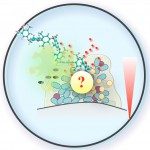Link to Pubmed [PMID] – 25139899
MBio 2014;5(4)
Bacterial biofilm communities are associated with profound physiological changes that lead to novel properties compared to the properties of individual (planktonic) bacteria. The study of biofilm-associated phenotypes is an essential step toward control of deleterious effects of pathogenic biofilms. Here we investigated lipopolysaccharide (LPS) structural modifications in Escherichia coli biofilm bacteria, and we showed that all tested commensal and pathogenic E. coli biofilm bacteria display LPS modifications corresponding to an increased level of incorporation of palmitate acyl chain (palmitoylation) into lipid A compared to planktonic bacteria. Genetic analysis showed that lipid A palmitoylation in biofilms is mediated by the PagP enzyme, which is regulated by the histone-like protein repressor H-NS and the SlyA regulator. While lipid A palmitoylation does not influence bacterial adhesion, it weakens inflammatory response and enhances resistance to some antimicrobial peptides. Moreover, we showed that lipid A palmitoylation increases in vivo survival of biofilm bacteria in a clinically relevant model of catheter infection, potentially contributing to biofilm tolerance to host immune defenses. The widespread occurrence of increased lipid A palmitoylation in biofilms formed by all tested bacteria suggests that it constitutes a new biofilm-associated phenotype in Gram-negative bacteria.





